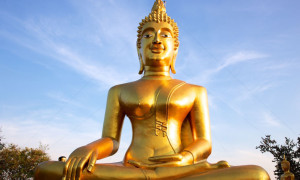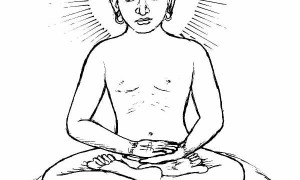Breathing out short, he knows “I am breathing out short.”
Breathing in short, he knows “I am breathing in short.”
Buddha, Anapanasati Sutta
Explanation of Anapanasati Stage Two by Buddhadasa Bhikkhu
This Stage differs from the first only in that it deals with short breathing rather than long. Breathing short here refers only to breathing that occurs intermittently, namely while the meditator is training himself by on purpose taking short breaths. As soon as he knows just what the short breath is like, he stops breathing short. The terms “short” and “long” may be applied to normal breathing depending on one’s choice of criteria. As his practice progresses, zeal and gladness will arise and gradually increase the length of his breaths.
Should short breathing occur during the practice because of fatigue, excitement, illness, fear, pain, or because of confusion in the initial stages, that short breathing should be observed and acknowledged as short. If it is not made much of, it will pass and not occur again. Once such short breathing has passed, there is no need to think about it again.
If the meditator trains himself to breathe short as an experiment, the observing of the short breathing lasts only as long as the experiment. The real objective of training in short breathing to give the mind experience in dealing with the more difficult conditions, so that it will be equipped to attain concentration with every kind of breathing.
To sum it up, breathing short in Stage II has been taught as a preparation for the short breathing that will occasionally occur of itself. It is also used as a means of observing and comparing the characteristics of long and short breathing. When the meditator has understood well both kinds of breathing, he will be equipped to attain full concentration without hesitation regardless of whether the breathing is short or long. Normal breathing changes in response to various natural factors such as zeal. Exceptionally short or long breathing may intervene at times but never for long. This must be adjusted as the situation demands. For instance, the arising of uneasiness can be detected by noting that the breathing has become shorter. The breathing can then be adjusted, made long again, by developing gladness.



